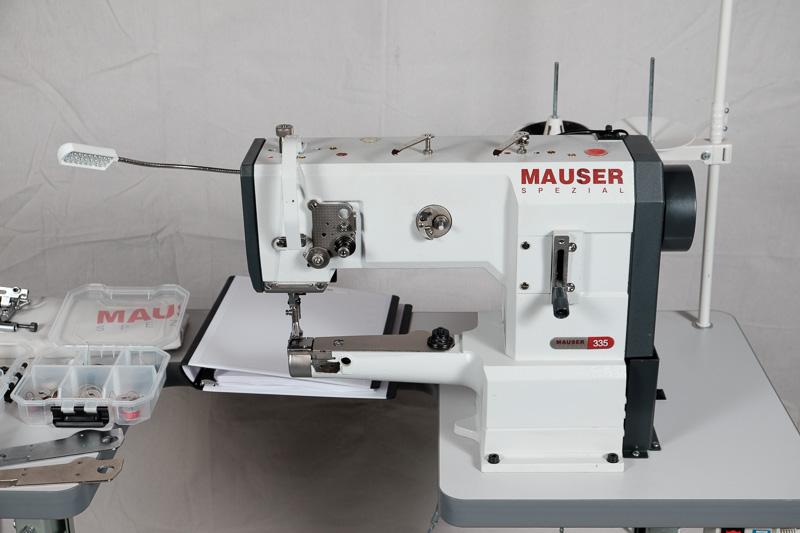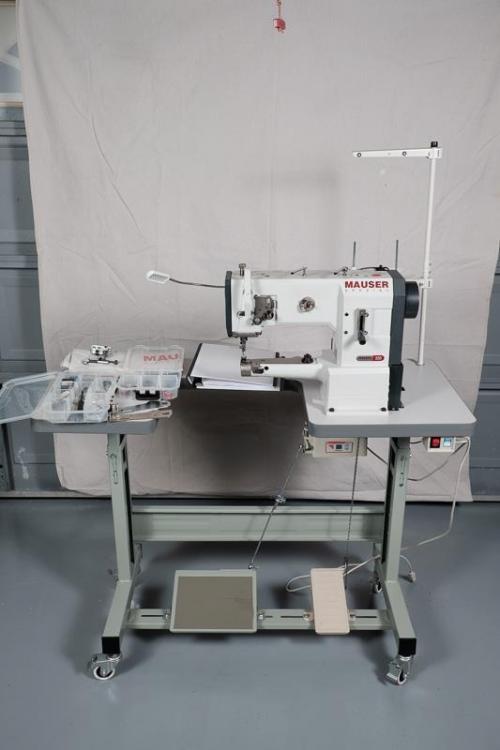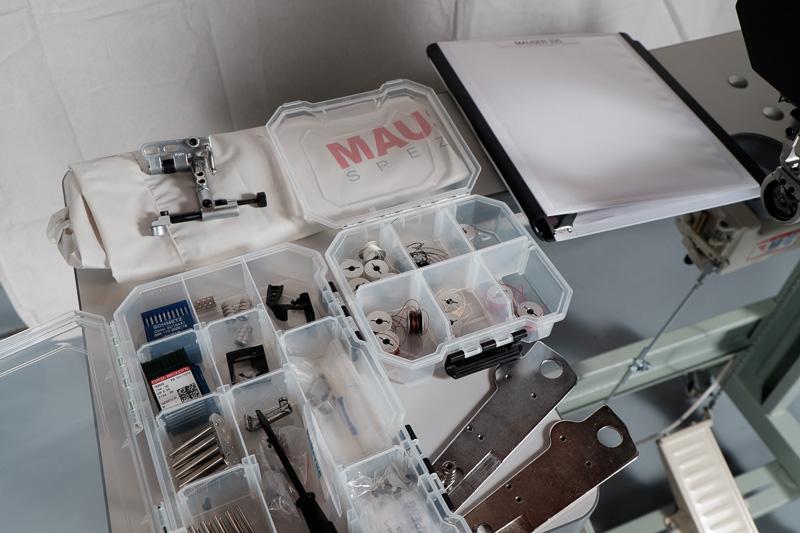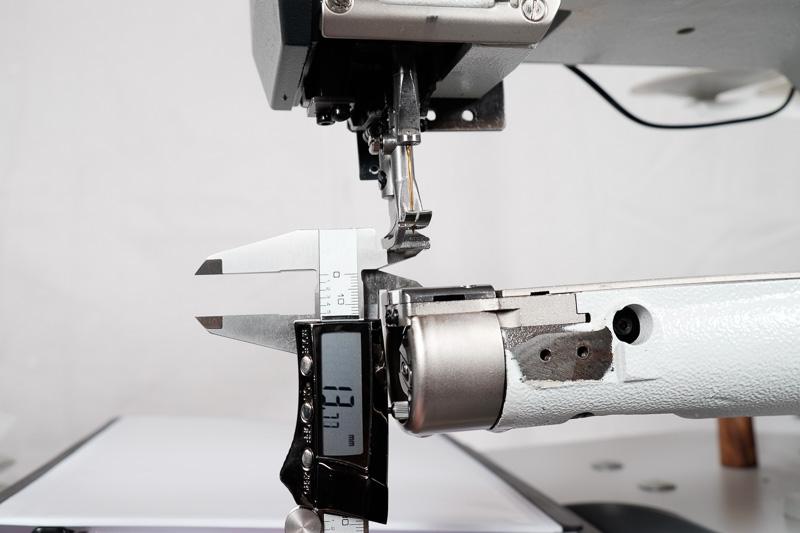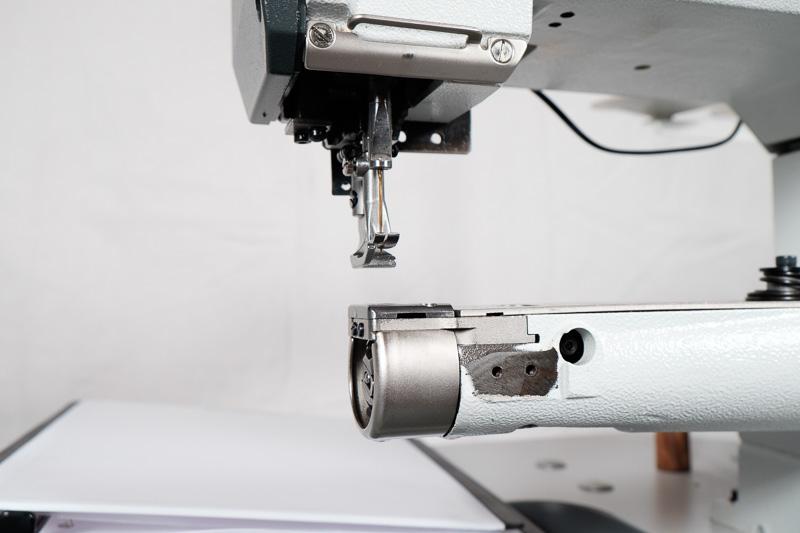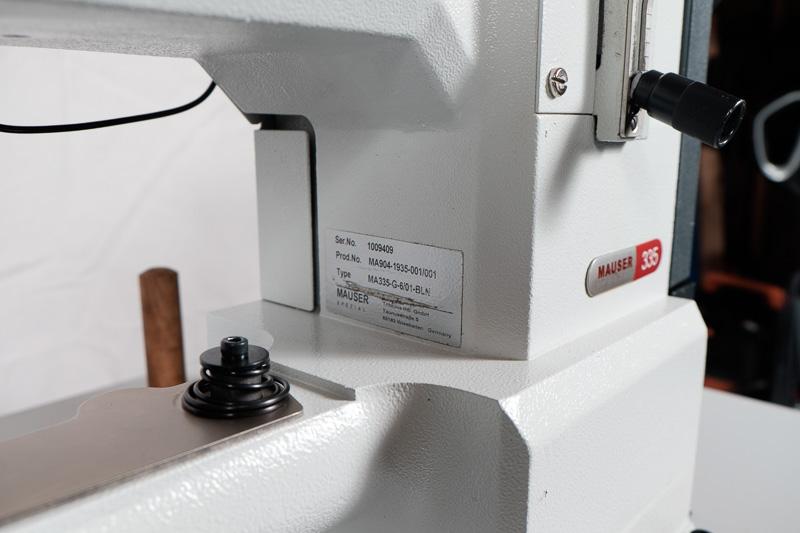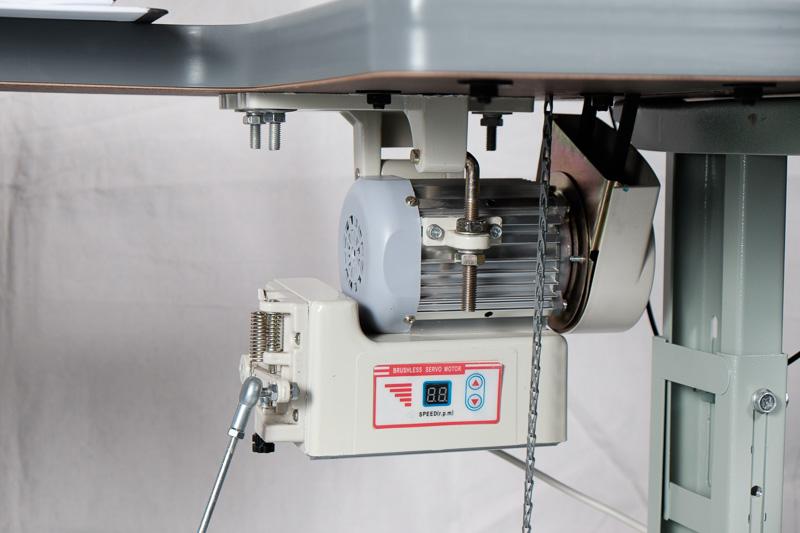
R8R
Members-
Posts
363 -
Joined
Content Type
Profiles
Forums
Events
Blogs
Gallery
Everything posted by R8R
-
Enduro and Artisan motor still available.
-
Speed reducer pulley sold. Enduro motor and Family Sew motor pending. Artisan motor is up for grabs.
-
It's clear-out time in the shop... One Family Sew standard 110V servo motor, never used, swapped out from a brand new machine. - $85 One Enduro SM1050-2PF motor, 220V single phase, used for about an hour total. Includes needle positioner and can be adapted for auto foot lift. $125 One Artisan ACF-625 110v motor, used for a couple projects. Includes needle positioner. $100 One 3/6/9 speed reducer pulley, installed and tested but it was overkill for my needs. $125 All items free shipping to continental USA only, sorry no international.
-
Best offer! Can ship freight or deliver to SF bay area or Monterey bay area.
-
Nice Mauser 335. Clean and ready to sew. Set up for size 18 needle. Includes table, servo motor, needles, bobbins, parts for synchronized binder operation (no binder attachments included), various presser feet, throat plates, flip-down roller guide, spare parts (screws, etc), LED light, vinyl cover and a d-ring binder with manuals. Can deliver in SF Bay Area or crate and ship for actual cost, buyer to arrange pickup. $1600 OBO.
-
Hello moderators. I see some posts I made here in the forum have been deleted because I was recommending someone avoid a particular brand of machine that is advertised here. I did not give details of my issues with them, I did not make false statements, I just said to avoid the brand. If we can't state opinions here or give recommendations on what to look out for, (to help people avoid costly mistakes) what is the point here? I shall avoid this forum from now on. So I guess go ahead and delete this post too. Good day.
-
This motor: https://store.keysew.com/sp-1100-npfl ...or similar ones where the speed control unit/lever is detachable would do the trick. Motors where the control is separate and has a cable that goes to the main box. I often set the control lever on top of the table when I'm initially setting up the machine. Attaching a handle to the treadle lever and attaching the control unit to the table top would seem an easy enough thing to do. The control unit is attached to the underside table by a sturdy L-bracket, should be easy enough to attach it up top.
-
I'll add... Most basic motors work well with speed reducers but not all EPS motors will. Many reducers are made from large cast iron pulley wheels and act as a fly-wheel. They have ratio reduction AND inertia. EPS doesn't always play well with this. I do mostly heavy woven fabrics with lighter leather trims and I use EPS all the time. Having the ability to tap for a single stitch is AWESOME. The motors I use have two stage EPS (needle up or down) and the option of switching the EPS function off and on. I think I found the best of both worlds as the motors I use have EPS *and* a boat load of torque and load speed control. Seiko HVP-70 (great motor if you can find one) SP-1100-NPFL (Keystone sells these)
-
On some position sensors it takes FOREVER to get the wobble out, typically due to loose machining tolerances either on the sensor or the stud it attaches too. If this is the type of sensor that has a removable cover, then you can usually work on the wobble first, then work on the positioning by adjusting the disks inside. If it's the kind where you set the positioning by turning the senor barrel and tightening to the stud, then it's just trial and error. Make sure the bolt that fixes the sensor body in place is not too tight. It's just supposed to keep the sensor body in place enough to not spin, but not so firm that it's fighting the attachment at the stud and making the wobble worse. Positioning tip: don't have the "needle down" position stopped at fully buried, at the lowest point. Needle should come back up about 1-3 millimeters before stopping so the next stitch loop has already begun, just before the hook comes around to grab it. Helps avoid missed stitches when resuming sewing. Exact height can be determined with a little experimenting
-
Will it wear it out? Maybe in a production environment, sewing a min of 8 hours a day for weeks on end. These machines are tough. You could probably push the tuning to 92 thread, but then it may not handle smaller threads very well. It might wear YOU out with frustration trying to sew on a machine where it's pushed to it's max with no headroom. If your minimum thread is 92, then this machine will always be at max capacity. If you mostly use 69 or smaller, and occasionally do 92, it might be ok. I would look for something with a little more capacity.
-
The 2342 is the cylinder arm version of the LU-2810. The 2810 comes in basic or electronic/direct drive versions, while the 2342 is only avail in electronic/direct drive (with or without thread trimmer) I have the 2810 and wanted an equivalent cylinder arm machine so I went with the Adler 669 Eco (non electronic/direct drive, separate motor, etc.) It rules. Higher lift and longer arm than the 1341 and easier to adapt to binding.
-
Asked for a quote once. Took forever to reply, and the quote was much higher than the prices listed on the site.
-
I have the LU-2810A (Euro style Durkopp Adler type feet instead of Singer standard) I sew heavy nylons and leather trims, 69 thread and up. It can walk over literally any assembly I throw at it. In fact, I would say if I ran into a situation where it couldn't walk over a given assembly, I should probably re-think the design. Only other machine I would consider in this class would be the Adler 867. The Juki will be quite a bit less money in the US market.
-
It's the other way around, the 669 is the synchronized binder machine. I mean the 869 may have a binder option (?) but the 669 can be ordered specifically set up for it. I have the 669, just took delivery before I moved shop but the little time I have on it so far has been great. I don't think you would have issues with anything you listed as long as the motor was up to task. These machines pair perfectly with Efka 1500 and 1550 motors, you can even mount the motor directly to the machine (shorter belt) instead of under the table.
-
Juki LU 563 or new Sailrite Fabricator?
R8R replied to RecklessRed's topic in Leather Sewing Machines
Sailrite has good products and support but mostly geared to canvas/sail making. Best thing about the Fabricator is the motor but you can buy one separately. (I had a Fabricator, and even on woven nylons I maxed it pretty quick) They are decent machines for the price but not nearly as refined as any Juki. They are very similar to a Consew P1206. Similar spec Juki would be the 1541 (horiz bobbin). -
And you think industrial sewing machines are expensive
R8R replied to graywolf's topic in Leather Sewing Machines
Lol. Screen printing was my bread and butter for years. Basic manual machines start at $4k and full auto machines can easily go north of $100k (plus ancillary equipment like dryers, etc add tens of thousands more) -
205 Adler Clone Recommendation for Binding Work
R8R replied to anvlts's topic in Leather Sewing Machines
Uwe (forum member here) has some good youtube vids about setting these up. The main thing is you want the clone machine to have the access hole in the cylinder arm to attach the binder plate to the lower oscillating parts inside the arm. Some clones do not have this access hole. I believe Sewpro sells one of these clones as a full binding package. -
Okay, I’m positive I need a 335 (video)
R8R replied to luxuryluke's topic in Leather Sewing Machines
The new style 335 (Pfaff and Mauser Spezial) are actually spec'd for 80nm to 100nm needle size (that's 12 to 16!) I've had good results timing mine to an 18 needle (then I can squeeze a 19 or 20 in there) but it struggles to sew anything heavier than 92 and it struggles to feed anything that would require thicker thread anyway. Anyway, that's my experience. Maybe the old style has a little more capacity. -
I owned a vintage White rotary and it was great for making garments at home. I gave it to my kid who was in a fashion design class at the time. I would not recommend it for wallets or any leather work at all.
-
Okay, I’m positive I need a 335 (video)
R8R replied to luxuryluke's topic in Leather Sewing Machines
I have a Mauser version (Pfaff) 335 pretty much exactly like the one in the vid and yes, it can do that round and round business all day. On vinyl, woven or light leather. I actually made my wife some crazy looking gauntlet/bracelet things using that exact technique. If you are trying to blaze through lighter materials it is an excellent machine. If you are doing heavier leathers or veg tan it will struggle. It will also struggle on anything heavier than 69 thread. You can force it to do 92 but it doesn't like it. It's a light touch machine. -
parts Found Pfaff parts for a gold 1245 machine
R8R replied to luxuryluke's topic in Leather Sewing Machines
Yeah doesn't look like a sealed cover or reservoir, just more of a "keep your fingers out" and "keep grease from flying everywhere" type of part. -
parts Found Pfaff parts for a gold 1245 machine
R8R replied to luxuryluke's topic in Leather Sewing Machines
Newer model 335 bobbin case is $110. Not the hook mind you, just the weird shaped bobbin case. I typically keep more than one case on hand so I can adjust each for different thread weights/tensions. On this machine it's not worth it.


